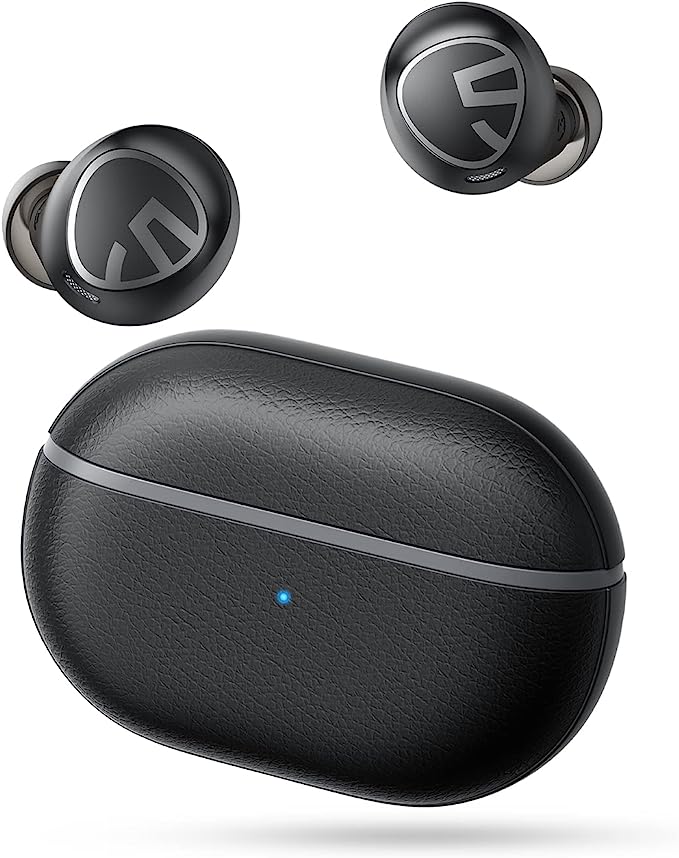Neckband vs TWS: Why Neck Headphones Still Make Sense
Update on Oct. 23, 2025, 1:05 p.m.
Look around. The era of “True Wireless Stereo” (TWS) is undeniably here. AirPods, Galaxy Buds, and countless others have made tiny, individual earbuds the new normal. The neckband—that “U” shaped collar with two wired buds coming out of it—feels like a relic from 2017.
But a funny thing happened on the way to this “perfect” wireless future. We all just accepted a new set of daily anxieties as normal.
If TWS earbuds are the future, why are they often so frustrating? And why do companies like Sony, even today, still release new, popular neckband models like the WI-C100?
The answer is simple: The “outdated” neckband design is actually the perfect solution to the three biggest problems TWS earbuds created.

Anxiety 1: The Fear of the $100 Drop
This is the number one fear of every TWS owner. You’re rushing for a train, pulling off your mask, or just jogging, and poof—one earbud is gone. It’s either down a storm drain or lost forever in the grass. The keyword “lost” pops up constantly in user data for a reason.
It’s a tiny, expensive, and slippery piece of plastic with no physical tether. We’ve created an entire sub-industry of “ear hooks” and “tethers” for AirPods, which is hilarious—we’re so afraid of losing our wireless buds that we’re buying wires for them.
The Neckband Solution:
This is obvious. The two buds are physically wired together. When you take one out to talk to someone, you just let it drop. It hangs on your chest. You can’t lose one without losing the other, and it’s much harder to lose something that’s draped around your neck.
Anxiety 2: The Battery Life Ritual
TWS earbuds have a battery life problem. It’s not just about the buds themselves, which last maybe 4-6 hours. It’s about the case. * Did I charge the buds? * Did I charge the case? * Did the bud seat correctly on the charging pin, or did I just open a case to find one bud at 100% and the other at 5%?
The TWS ecosystem requires you to manage the battery level of three separate devices.
The Neckband Solution:
Physics. A neckband has a ton of empty space inside that “U” shape. Where TWS buds have to fit a tiny battery, a chip, and a driver into a space the size of a bean, a neckband can fit a massive battery.
This is why a TWS bud (like an AirPod) gets you 6 hours, but an entry-level neckband like the Sony WI-C100 gets you 25 hours on a single charge. That’s not a typo. It’s the difference between charging every day and charging once a week.
Anxiety 3: The Sweaty-Finger Tap Failure
TWS earbuds love to use “sleek” touch controls. They look great in a marketing photo. But try using them in the real world.
Try to double-tap to skip a track when your fingers are sweaty from a run. Try to answer a call when you’re wearing gloves. The “Keyword Added” data for headphones is full of “buttons,” “pause,” and “skip”—users just want reliable controls.
The Neckband Solution:
Big, dumb, beautiful physical buttons. A neckband has a dedicated control module, usually on the left side. You can feel the “Volume Up,” “Play/Pause,” and “Volume Down” buttons with your thumb, without even looking. It’s tactile. It’s reliable. It works 100% of the time, even with gloves on.
But, They’re Not Perfect…
Of course, neckbands have their own issues. * The “Slide”: As some user reviews note, if the weight isn’t balanced, they can “slide off your neck” when you’re not wearing the buds. * The “Wire”: The wire can snag on your jacket zipper or backpack strap. * The “Look”: Let’s be honest, they don’t look as “cool” or “professional” as a pair of discreet TWS buds.

Conclusion: Choose Your Compromise
The TWS earbud is a marvel of miniaturization. But it compromises battery life, security, and control for its tiny size.
The neckband headphone is a marvel of practicality. It compromises “looks” for massive battery life, physical security (you can’t lose them), and reliable, tactile buttons.
In an age where everyone is complaining about battery life and the fear of losing a $100 bud, the “outdated” neckband might just be the most modern, sensible choice you can make.


















